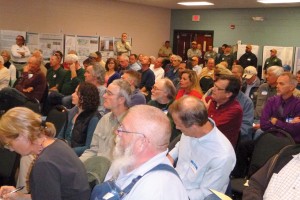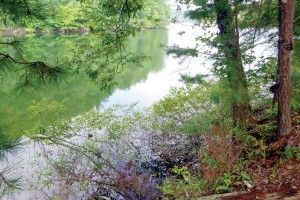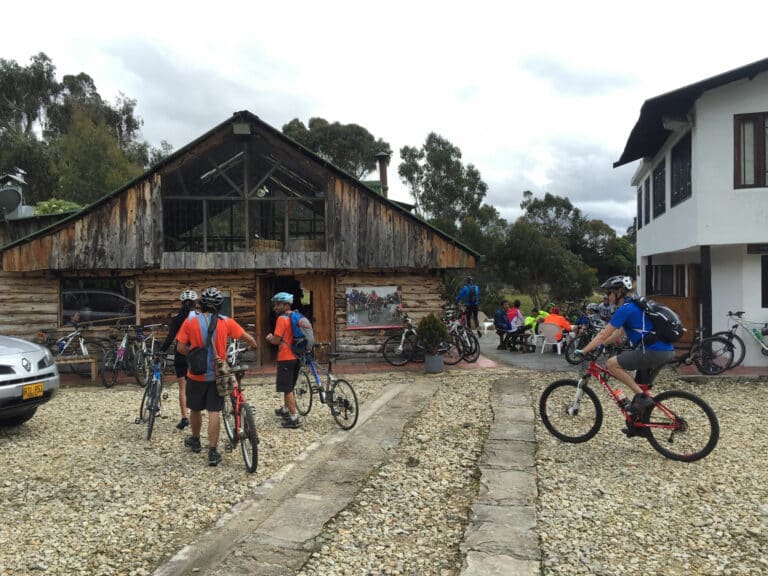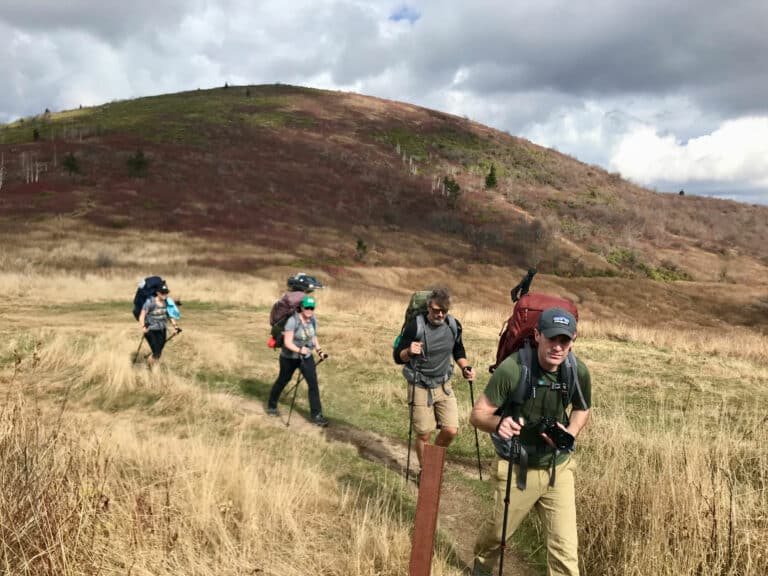Speak for the Trees
As a veteran section hiker on the Appalachian Trail, Bill Van Horn has plenty of stories about how the world-famous footpath has changed over the years. Although much of the trail lives up to its world-class billing, not everything they saw was worthy of a postcard.
“Some places look like someone went in with a mower,” he said. “There are clear postage-stamp boundaries where everything was cut, and it’s not a pretty sight. It’s extremely obvious where they clear-cut and there’s nothing left.”
Even so, he recognizes the need for some logging on the public lands that the trail transects, including the Nantahala and Pisgah National Forests.
“I fully believe our forests need to be sustainable and that we need to strike a balance between different uses,” Van Horn said. “Everyone loses a little bit, but hopefully everyone gains a little bit too.”

That sentiment nicely encapsulates the dilemma facing the U.S. Forest Service as it undertakes an ambitious four-year effort to revise the Nantahala and Pisgah National Forests Land and Resource Management Plan, which will guide management of these public lands for the next two decades. The two contiguous national forests comprise more than one million acres and collectively are among the most visited in the country. Not surprisingly, lots of people have different—and often diametrically opposed—ideas of what to do with them.
The forests must simultaneously maintain habitat diversity, improve the health of watersheds, and support multiple uses such as logging and various forms of sustainable recreation. Juggling these goals is a Herculean and thankless task that will satisfy no one completely. In the balance lies the fate of almost 1,900 types of plants, including nearly 130 tree species, and more than 300 species of vertebrate animals. Some of these are found nowhere else on earth.
With so much riding on the management plan, the agency has been hosting epic talk-a-thons with as many stakeholders as possible in an effort to see how, and to what extent, competing visions can be reconciled. The effort should inform similar discussions around country about the fate of our public lands.
Stevin Westcott, the Forest Service official charged with overseeing the plan revision, is at the forefront of the forest debate. And although he’s taking heat from all sides, he’s okay with that.
“The Forest Service is charged with managing for the greatest good,” he explains. “All of the uses in these forests are important. Our goal is to find a middle ground and manage the land and the facilities to meet the needs of all users, and at the same time maintain ecological sustainability.”
That means somehow balancing activities that range from bird watching and hiking to ATV riding and logging—a tall order, and some would say an impossible one. But the Forest Service is determined to try by facilitating meetings between different groups.
This approach marks something of a departure for the agency. In 1987, when the forest management plan was last revised, competing factions retreated to their corners and yelled at each other. The result was glacial progress and endless plan appeals. Westcott and others are determined to avoid that result this time around. “There’s probably a bigger emphasis on collaboration today than there was years ago,” he said. “We actively encourage stakeholders to talk.”
Jill Gottesman, Southern Appalachian outreach coordinator for The Wilderness Society, welcomes the change. Her group is part of the Nantahala-Pisgah Forest Partnership, a diverse collection of stakeholders that includes environmental organizations, logging companies, and outdoor recreation groups. Members of the partnership explicitly agree to focus on common interests rather than conflicting positions.
“We want to use a better process and work toward a better plan, as well as supplement a Forest Service approach that has been traditionally disappointing,” she said. “We’re doing what the agency really can’t do in terms of tackling the thorny issues that come up to build trust and common ground.”
Speaking for The Wilderness Society and not the partnership, Gottesman said she would like to see additional recommendations for new wilderness. She cited 41 places in the Nantahala and Pisgah National Forests that her group dubs “North Carolina Mountain Treasures” deserving of better protection, either as full-on wilderness or some lesser designation such as national recreation areas.
At the same time, she acknowledges the legitimacy of competing uses; the Wilderness Society simply wants input as to where they happen. “We need a good, solid, productive plan that isn’t just going to protect the vulnerable areas, but is also going to identify suitable places for logging and other uses,” Gottesman said. “We think there are places that should be designated as wilderness, but we also recognize there are a lot of other values and needs.”
For example, logging could be concentrated near existing roads, which would be cheaper and less environmentally destructive than scarring virgin wilderness. The Wilderness Society even would be willing to help locate suitable logging areas using its considerable mapping expertise. That sort of give-and-take is integral to the new collaborate approach. “In building relationships and trust with other groups, they in turn hopefully will support us in setting aside new wilderness,” she said.
Gottesman also would like to count on support from Forest Service managers. Some of these Forest Service managers are from a more progressive school of thought, but there are a lot of local folks who fondly remember very inflated levels of logging in the 1980s and 1990s. As the agency gets more and more younger personnel, their focus is gradually changing away from extractive uses like logging toward more sustainable, non-extractive uses like recreation.
Westcott pointed out that logging in the forests is only permitted in four out of the 15 official management areas, and that the final management plan will require sustainable harvesting practices. “The emphasis on logging in the Forest Service is nowhere near what it used to be,” he said. “What we do today is very different from what we did in the late ‘80s.” Timber harvesting is down 35 percent since then, primarily because of slashed federal budgets. Logging methods are different too; clearcuts now are limited to 10 acres and are usually done to diversify wildlife habitat. Today the majority of harvests are of the “two-age” variety where mature trees are left behind. At the same time, 97 percent of North Carolina forests are considered available for timber production—a number that hardly appears balanced to many environmentalists.
Still, many of them are hopeful for the future. Josh Kelly, field biologist for the Western North Carolina Alliance (WNCA), said environmental organizations “pretty much won the argument” over clear cutting on federal lands in the state when the 1987 Nantahala-Pisgah management plan was amended in 1994 to reduce timber harvesting to about 3,000 acres per year. That was a significant change from the ‘80s and ‘90s, when “basically the entire forest was on a regular rotation for logging,” he said. Today, although theoretically the vast majority of the state’s public forests can be logged, 70 to 90 percent of them are now managed for some other use. “Timber sales have plummeted, and even some people outside of the industry are questioning that,” he said. “Some strategic logging should continue in national forests in short-leafed pine and other areas because it’s done with the most environmental controls and maintains traditions of woodcraft. Prioritizing based on ecological restoration needs can really help eliminate conflicts over land management. We want to work with as many groups as we can to identify the parts of the forest that are appropriate and inappropriate for logging.”
Kelly has a laundry list of other priorities he would like to see addressed in the plan revision, including better management of major ecosystems, establishment of migration corridors for key species, and enhanced protection for hundreds of “special biological areas” identified since 1987. “I think public opinion has always been with a use of public lands that doesn’t hand over too much of the forest to industry,” he said. “Most people don’t want an industrialized landscape, and they value clean water and recreational opportunities.”
Of course, the debate isn’t limited to environmentalists vs. loggers. Outdoor recreation enthusiasts are also important players who often find themselves at odds with others in their own camps. As Westcott points out, recreation and tourism bring in hundreds of millions of dollars annually to Western North Carolina, an amount that dwarfs timber revenues. But it also costs the Forest Service huge amounts to maintain trails, cabins, and other public facilities. And what happens when someone comes bombing down the trail on a mountain bike and scares away the bird that another just spent all day finding? 
Fault lines between outdoor recreation groups can sometimes seem like unbridgeable chasms. What happens when mountain bikers and hikers collide, literally or figuratively? Are hikers obstructing everyone else and just asking to get plowed over, or are bikers tearing up trails that hikers lovingly maintain? Anglers and boaters are also famously at odds, with the former wanting to limit the latter’s access to some trout waters out of concern that fish don’t take kindly to big rafts and thrill-seeking paddlers. And every outdoor enthusiast in the forest during hunting season is a potential accident waiting to happen.
These issues can be resolved if the parties are so inclined. For example, equestrians and mountain bikers have been known to take turns using popular trails, like those at Tsali Recreation Area. But too often disputes degenerate into acrimony when groups don’t focus on common interests, with hiking clubs refusing to help maintain trails unless they’re designated hiking-only and mountain bikers lobbying against wilderness areas where biking is banned. The resulting compromises can end up pleasing no one.
Sergio Capozzi, president of Society of Outdoor Recreation Professionals, agreed that the balance is difficult. “Access is a very broad, very complex term as it relates to recreation, he said.” “The plan revision process should engage as many user groups as possible to avoid issues before they bubble up. Of course, that’s easier said than done.”
David Lippy is the current president of the Nantahala Hiking Club, which maintains about 60 miles of the A.T., all of it in the Nantahala National Forest. He wants to ensure that current protections for the A.T. corridor are preserved. “If we come out of this plan revision without losing any ground, we’ll be happy,” he says. “We would always like to see the Forest Service acquire more land next to the trail, but with today’s budget, I don’t know if that will happen.” Although he worries about logging operations visible to hikers, he also wants to maintain bans on bikes and horses from many parts of the trail—within reason, of course. “We’re trying to work with these other groups who have a legitimate need to use the forest, and we try to be good neighbors so they can enjoy their sports without intruding on what we’re trying to do,” he said. “We have members that ride horses, hunt, all the various uses. There’s plenty of forest to go around. We just don’t want activities that aren’t compatible in the same area at the same time. We have a lot common goals, and if we all work together, we’ll probably get a lot further than if everyone demands their little pieces without cooperating.”
VOICES FOR THE WILD
Now is the time to voice your opinion on the next two decades of forest management. A new 20-year management plan is being developed this spring, and this is the public’s opportunity to chime in. Visit www.fs.usda.gov/nfsnc for dates and times of public meetings. You also can submit comments or questions about the plan to [email protected].








